What an epic story. Imagine thrilling plant explorations. Art - nearly 20 paintings not seen together in New York since their 1940 Debut. History. Exotic locale. Botany. Gardens. Endangered flora. Plus, a memorable denouement.
Georgia O’Keeffe may have spent only nine weeks immersed in the Hawaiian Islands in order to produce two images for a Hawaiian Pineapple Company promotional campaign - Dole - but it took many years to put together this extravaganza at The New York Botanical Garden, opening Saturday.
The New York Botanical Garden’s secret sauce for producing compelling, comprehensive events that celebrate the relationship and crossroads of fine art and nature (Kahlo, Manet & more) may have reached its zenith in the Georgia O’Keeffe: Visions of Hawai‘i show that opens May 19th and runs through October 28th.
This show is worth at least a two-day exploration because there is so much to see and experience. Yet, while the show is outsize the experience is an intimate one. When you enter the Gallery to see the 20 framed paintings hanging there, it’s exciting to consider that this is the first time this little known body of work is even on display.
It’s a jewel box of botanic art.
At the press preview, we were told the show was most likely sparked by a November 2012 feature in The New York Times that detailed the story behind O’Keeffe’s unlikely sojourn to Hawaii and her artful plant paintings as a result of an equally unlikely commercial commission.
A more recent March feature in The New York Times that I well remember as provocative reading, could’ve only amplified the Garden’s resolve to showcase the urgent need to sustainably manage threatened and endangered species. The article reported that out of the 1,280 endangered animals and plants recognized by the US Fish and Wildlife Service, 557 are in Hawaii. Conservationists have called it the “extinction capital of the world”. The show highlights the importance of plants in Hawaiian culture and the threat the native species face today.
Visions of Hawai’i focuses on the iconic artist’s immersion in the Hawaiian Islands in 1939, evoking the Hawaiian gardens and landscapes that inspired O’Keeffe. And just as O’Keeffe often painted elements as she imagined or saw them -- adding in elements - so too does the NYBG team employ their artful botanical and horticultural expertise to present an extremely lush flower show; exquisitely curated in the Garden’s Enid A. Haupt Conservatory.
The walk through the long borders of the Conservatory showcases the remarkable beauty and richness of Hawai‘i’s wild and cultivated flora.
The Hawaiian Paradise Garden is a “starting off or jumping off point” featuring plantings designed by the inimitable Francisca Coelho, former NYBG Vice President for Glasshouses and Exhibitions where she designed and installed the major flower exhibitions in the Conservatory. I believe this is Coelho’s first show since she “retired” from the Garden.
Her touch is evident throughout the exhibit.
The curated plant display is masterfully presented and inspired by O’Keeffes letters to her husband, world-famous photographer, Alfred Stieglitz, charting the chronology of her Hawaii adventure.
There are three flora presented in the show:
- Native Flora: of the more than 1,200 Native Hawaiian species, 90% are endangered and/or threatened
- Canoe Plants: Cultivated plants that made their way to the archipelago more than 1,500 years ago by the Polynesians, including Bread Fruit, Cordyline, and sugar cane
- Modern Introductions: Plants that arrived with (white) settlers from the late 18th Century for agriculture and ornamentation.
The colorful tropical garden plants on display there reflect those those Georgia O’Keeffe encountered and painted while in Hawai‘i including: ti plant, frangipani, bougainvillea, heliconia, hibiscus, bird-of-paradise, ginger, and many more tropical favorites.
| Pineapple plant. Photo: courtesy Carolyn Campo |
Coelho’s plant list contains more than 300 types of plants for the exhibition.
This is an inspired introduction to the profound importance of plants in Hawaiian culture.
During our overview, we watched the newly produced video for the show where Georgia writes to her husband how overwhelmed she is by the welcome necklace of flowers - the lei; she describes the astonishing presentation in fastidios floral detail.
Starting in June the outdoor Conservatory Courtyards will showcase a wide variety of Hawaiian plants in beautiful potted and ground-level trough displays.
Pineapples and bananas, among other favorites, will be on view in the Central Courtyard, while hundreds of hibiscus, as well as gardenia and bougainvillea, will fill the Hardy Courtyard - especially a variety of the Hawaiian state flower: Yellow Hibiscus, hibiscus brackenridgei.
Because the brackenridgei is so very imperiled and endangered it cannot be taken across state lines, so you will see the Chinese or “resort” hibiscus, according to Todd Forrest, Vice President, Arthur Ross Vice President for Horticulture and Living Collections.
The set pieces in the Conservatory are designed by Tony Award-winning scenic designer Scott Pask. Beyond the borders, planting beds arranged around an open-sided, thatched-roof pavilion inspired by a traditional Hawaiian hale designed by Pask, tell the story of the canoe plants—those useful plants brought to the Islands more than 1,000 years ago by Polynesian settlers.
Vignettes featuring native Hawaiian plants will teach visitors about modern efforts to preserve Hawai‘i’s imperiled flora, according to NYBG.
O’Keeffe wrote during her visit to Hawaii: “My idea of nature has not been beautiful enough.”
How sweet and authentic is that?
Her immersive works evoking the gardens and landscape of the Aloha state clearly mark her desire to honor and capture that distant beauty and her acclaimed “sense of place.”
Let’s see if I can break down the show into doable categories that will help make it easier to understand and visit because there’s just so much to take in at this epic show.
Botanical Art: In addition to the gardens and landscape art that evoke the spirit of Hawaii already noted, there are a series of outdoor sculptural art installations, designed by contemporary Hawaiian-Chinese sculptor Mark Chai, and fabricated to his exacting specifications in Brooklyn. Mr. Chai and his beautiful wife and manager Makana, were on-site at the preview.
Chai’s outdoor installations are inspired by the forms of the plants that O’Keeffe encountered while visiting Hawai‘i are on view in the Garden. The 13-foot stainless steel sculpture in the reflecting pool near the Leon Levy Visitor Center was inspired by the Heliconia plant.
In addition, the 12 wooden lanterns hanging and illuminated at night, along Garden Way, for evening events celebrate the Hawaiian canoe plants: Kukui (candlenut), Ulu (breadfruit), Ipu (gourd), Awaphuki (ginger), Ohi a ‘Ai (mountain apple), and Hala (screwpine).
O’Keeffe Fine Art: Because this is the first time these paintings are on view in New York -- not seen together here since their 1940 debut, this is a marked occasion for O’Keeffe enthusiasts. Her works depicting Hawaiian subjects garnered critical and popular attention when they were exhibited in 1940 at An American Place, the gallery of her husband, famed photographer Alfred E Stieglitz.
Entering the rotunda leading into the LuEsther T. Mertz Library Art Gallery there are four oversize images of some of her snapshots anchored on giant panels:
Seascapes, Sugar Cane Fields, a Morning Glory, and Lava.
There is also a digitized version of her sketchbook to indulge in.
All the works - 20 in total - were created in 1939 and include:
Heliconia:
Crab’s Claw Ginger (plant depicted is actually a “lobster claw” heliconia)
Pineapple Bud (both of which were used in the (Dole) Hawaiian Pineapple Company’s advertisements and which are held today in private collections.
Hibiscus with Plumeria (loaned by the Smithsonian American Art Museum); and a series of landscape paintings depicting Maui’s interior ‘Īao Valley and lava-studded shorelines (loaned by the Honolulu Museum of Art, the Memphis Brooks Museum of Art, and a private collector).
The exhibition spotlights a transformative experience in the legendary artist’s life, revealing O’Keeffe’s deeply felt impressions and the enduring influence of the Islands’ rugged topography, dramatic landscapes, and exotic plants.
You cannot miss these feminine, evocative, and really - never-before-seen paintings.
Working together with the Garden’s Curator, Joanna Groarke, the fine art gallery show was curated by art historian Theresa Papanikolas, Ph.D., Deputy Director of Art and Programs and Curator of European and American Art at the Honolulu Museum of Art, the exhibition features these 20 O’Keeffe depictions of Hawai‘i.
In addition, the Garden has published “Georgia O’Keeffe Visions of Hawai’i” landmark volume book, available now in the Shop or online. The fully illustrated exhibition catalog explores this little-known chapter in the artist’s career. It’s a an equally luscious introspective into not only O’Keeffe but the Hawaii of that period. It’s a hardcover coffee table book that beautifully contextualizes the exhibit and explores the pop culture of the time as it relates to Hawaii.
Visitors of all ages will learn about Hawai‘i through complementary events and programs, including a scholarly symposium, an original short film, a film series, and the Interactive Mobile Guide.
A brief backdrop -- In 1939, at the age of 51 (probably kind of “old” in those days), O’Keeffe traveled on the aforementioned commission to Hawai‘i to produce images for the Hawaiian Pineapple Company promotional campaign. Her nine weeks on O‘ahu, Maui, Kaua‘i, and the Big Island of Hawai‘i resulted in stunning depictions of mountains and waterfalls as well as her signature close-cropped views of flowers and plants she observed there.
“Many things are so beautiful they don’t seem real,” she wrote.
At the time of her trip, O’Keeffe was among the most famous artists in the United States, best known for her depictions of the stark landscape and desert flora of her beloved New Mexico.
In the video documentary, you see newspaper headlines of the time, heralding her arrival to Hawaii. We were told that she was whisked into the Island’s High Society, she took took to wearing mumus.
At one point, she was a guest of Willis Jennings on his Hana plantation, where his daughter Patricia took to driving around O’Keeffe. Along with her own motor excursions, the artist painted quickly; often working right in the car.
The curators pointed out the sense of immediacy, brush strokes and liveliness in the paintings.

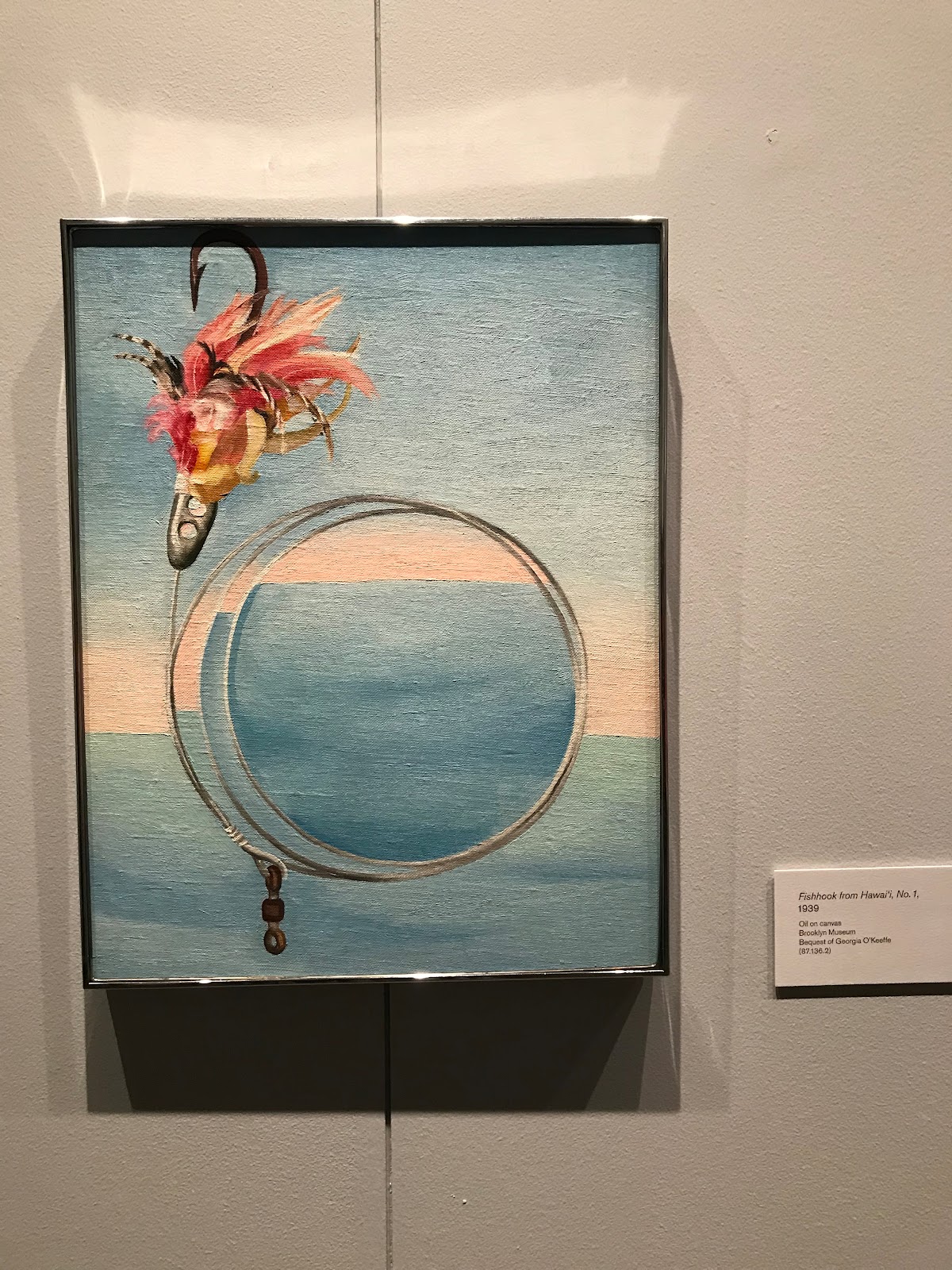
NYBG offers a rare opportunity to view the O’Keeffe advertising images as seen in the “Woman’s Home Companion” magazine - an example of the many media where her ad art appeared.
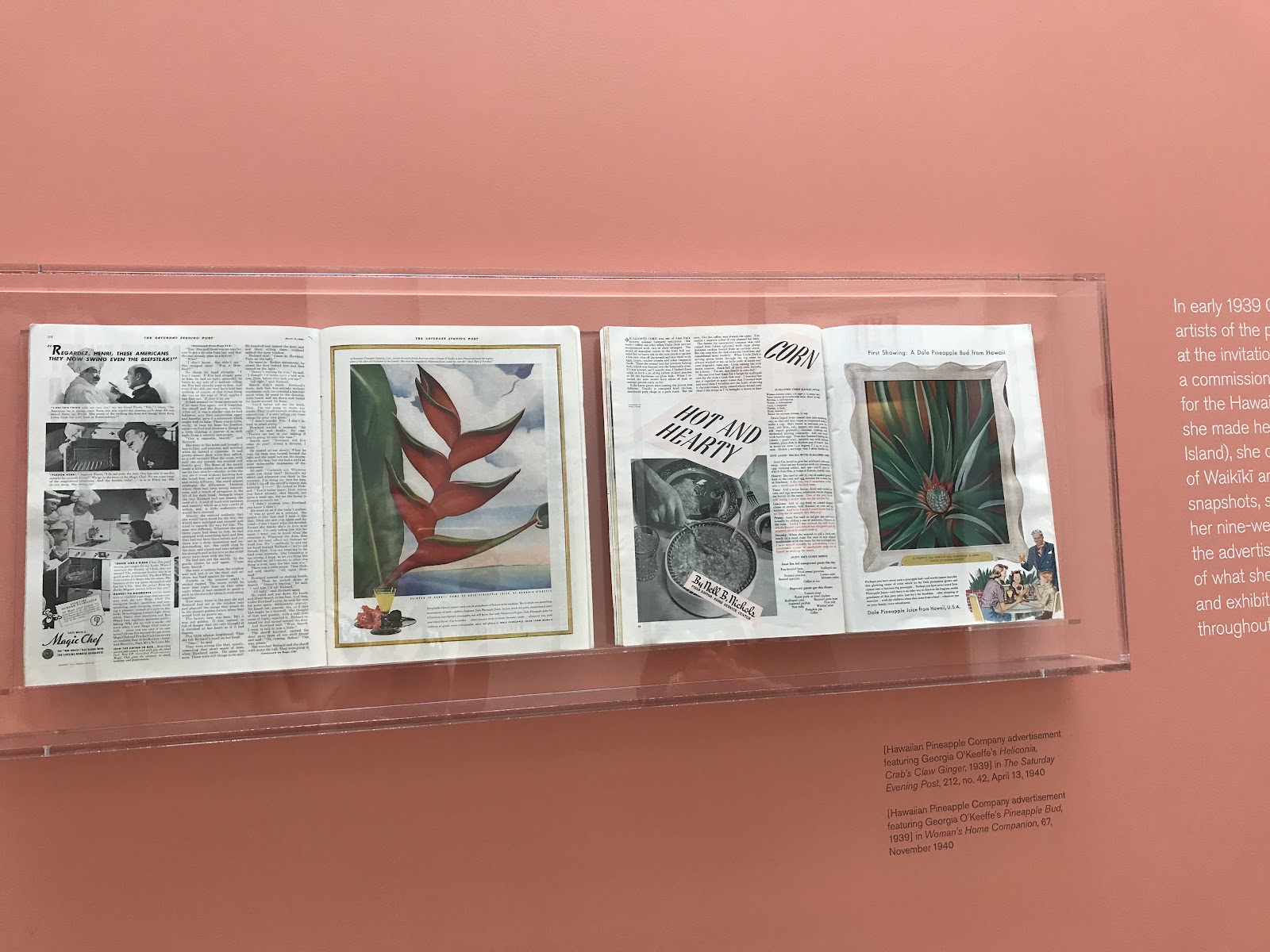
Georgia O’Keeffe: Visions of Hawai‘i explores this lesser-known chapter in her career, the enduring cultural impact of mid-century perceptions of Hawai‘i, and the natural history of the Hawaiian Islands—one of the most ecologically diverse places on Earth—hidden behind O’Keeffe’s depictions.
A Poetry Tour, organized in partnership with the Poetry Society of America, explores the relationship between nature and people in the Hawaiian Islands. The Tour highlights the work of contemporary poets in Hawai‘i, including former U.S. Poet Laureate W.S. Merwin.
Elsewhere in the Garden - in the Britton Rotunda, an original short film entitled “Off in the Far Away Somewhere: Georgia O’Keeffe’s Letters from Hawai‘i—narrated by Academy Award-nominee and NYBG Trustee Sigourney Weaver—features excerpts from O’Keeffe’s personal letters to her husband, famed photographer Alfred Stieglitz, written during her journey to and around the Hawaiian Islands.
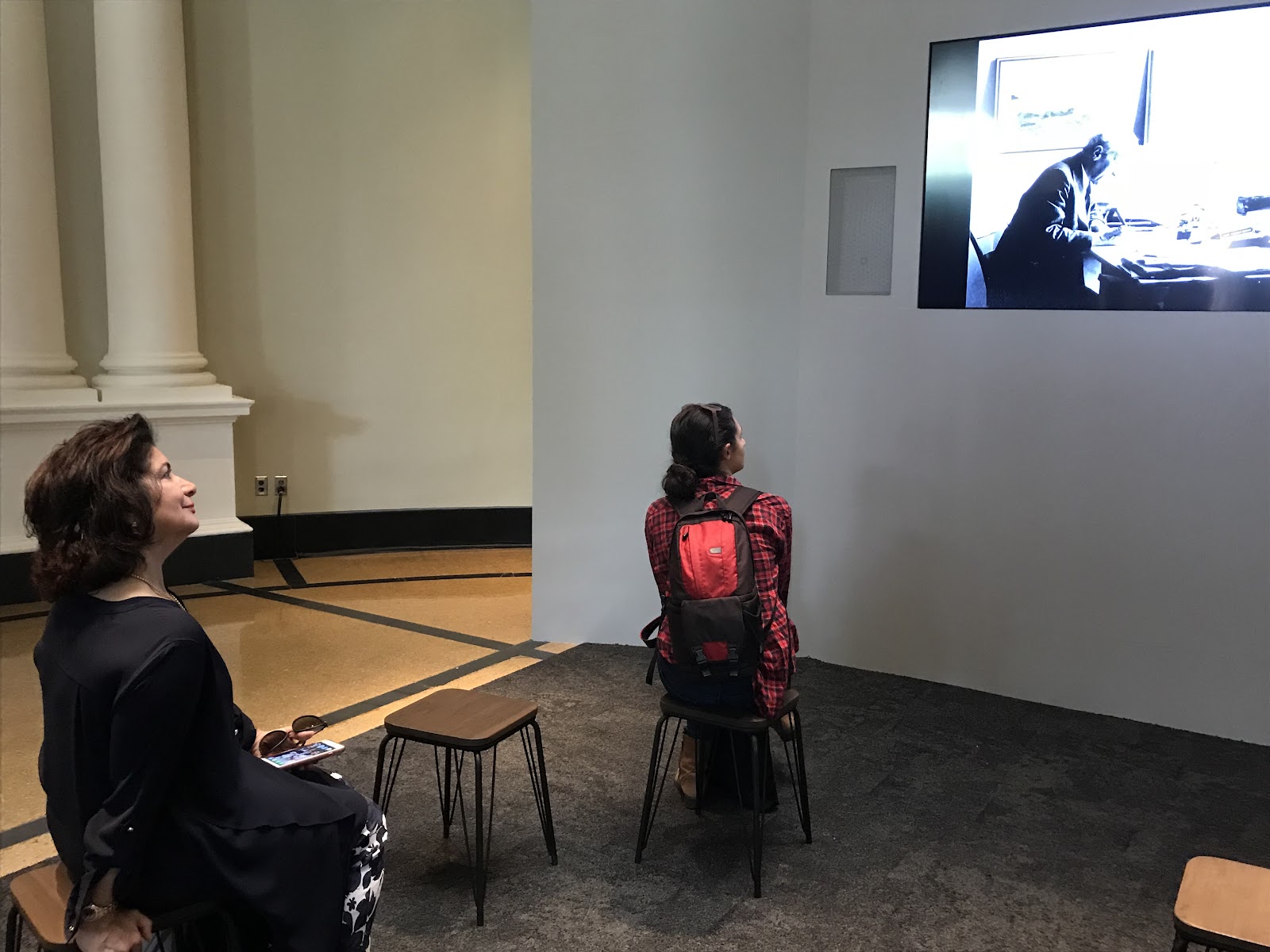
The Britton Gallery features Flora Hawaiiensis: Plants of Hawai‘i, tracing the history of Hawai‘i’s flora, from unusual native plants, to those valued by the ancient Hawaiians, to the ornamental and agricultural plants O’Keeffe painted.

Displays showcase archival photos, illustrations, and letters from the LuEsther T. Mertz Library and specimens from the William and Lynda Steere Herbarium. The exhibit also highlights the work of current and former NYBG botanists in the Pacific Islands, including Collaborators in Hawaiian Botany, Drs. Otto and Isa Degener, who explored and documented the flora of Hawai‘i in their magnum opus, Flora Hawaiiensis (1932–80), and worked to conserve its ecology.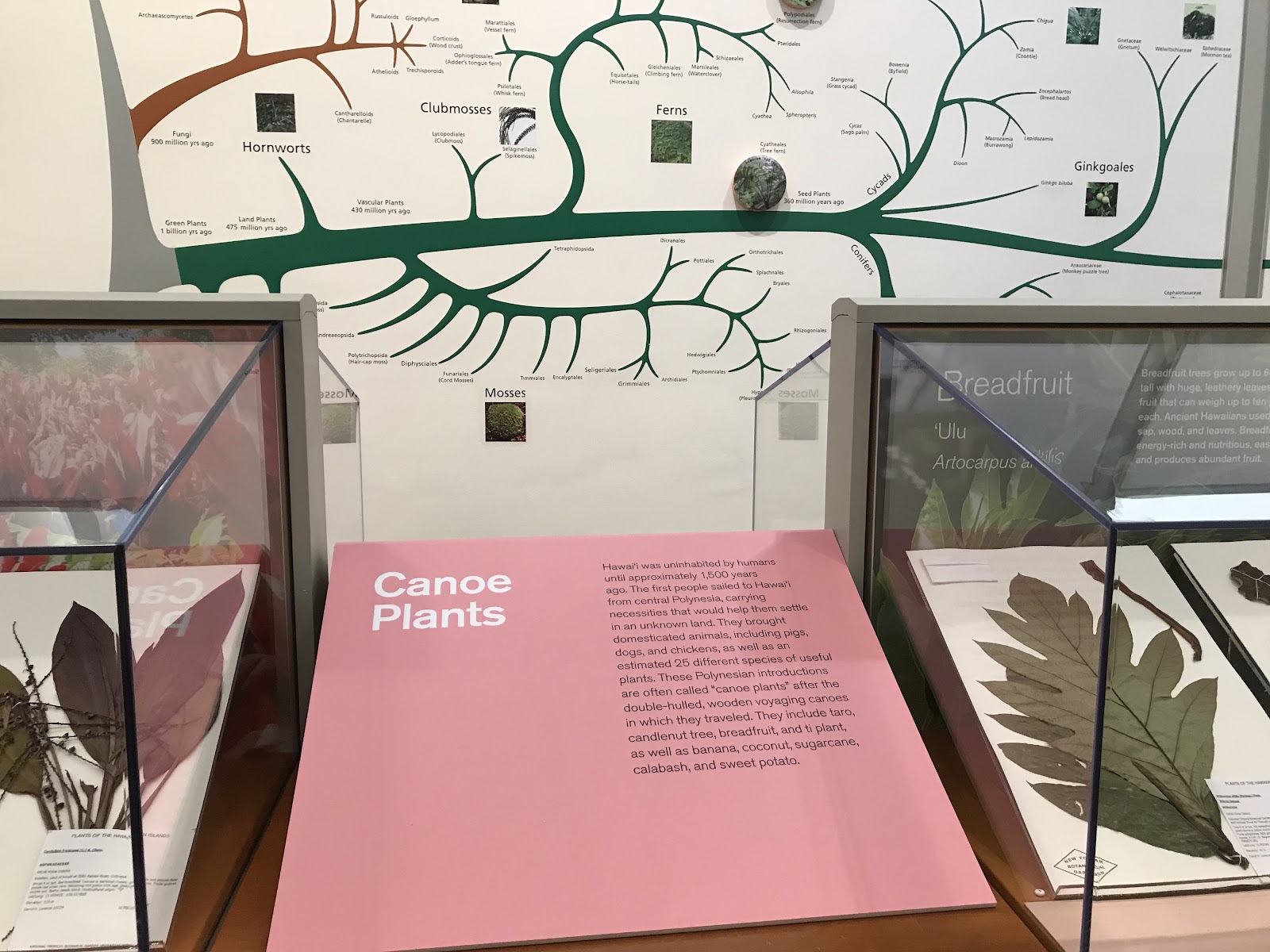
In the Ross Gallery, you can enjoy Georgia O’Keeffe’s Hawaiian Voyage, a display highlighting the artist’s journey from her departure at New York’s Grand Central Terminal through her nine-week island-hopping explorations of exotic flora and lush landscapes.
In the video documentary, you see newspaper headlines of the time, heralding her arrival to Hawaii. We were told that she was whisked into the Island’s High Society, she took took to wearing mumus.
At one point, she was a guest of Willis Jennings on his Hana plantation, where his daughter Patricia took to driving around O’Keeffe. Along with her own motor excursions, the artist painted quickly; often working right in the car.
The curators pointed out the sense of immediacy, brush strokes and liveliness in the paintings.
NYBG offers a rare opportunity to view the O’Keeffe advertising images as seen in the “Woman’s Home Companion” magazine - an example of the many media where her ad art appeared.
Georgia O’Keeffe: Visions of Hawai‘i explores this lesser-known chapter in her career, the enduring cultural impact of mid-century perceptions of Hawai‘i, and the natural history of the Hawaiian Islands—one of the most ecologically diverse places on Earth—hidden behind O’Keeffe’s depictions.
A Poetry Tour, organized in partnership with the Poetry Society of America, explores the relationship between nature and people in the Hawaiian Islands. The Tour highlights the work of contemporary poets in Hawai‘i, including former U.S. Poet Laureate W.S. Merwin.
Elsewhere in the Garden - in the Britton Rotunda, an original short film entitled “Off in the Far Away Somewhere: Georgia O’Keeffe’s Letters from Hawai‘i—narrated by Academy Award-nominee and NYBG Trustee Sigourney Weaver—features excerpts from O’Keeffe’s personal letters to her husband, famed photographer Alfred Stieglitz, written during her journey to and around the Hawaiian Islands.
The Britton Gallery features Flora Hawaiiensis: Plants of Hawai‘i, tracing the history of Hawai‘i’s flora, from unusual native plants, to those valued by the ancient Hawaiians, to the ornamental and agricultural plants O’Keeffe painted.
Displays showcase archival photos, illustrations, and letters from the LuEsther T. Mertz Library and specimens from the William and Lynda Steere Herbarium. The exhibit also highlights the work of current and former NYBG botanists in the Pacific Islands, including Collaborators in Hawaiian Botany, Drs. Otto and Isa Degener, who explored and documented the flora of Hawai‘i in their magnum opus, Flora Hawaiiensis (1932–80), and worked to conserve its ecology.
In the Ross Gallery, you can enjoy Georgia O’Keeffe’s Hawaiian Voyage, a display highlighting the artist’s journey from her departure at New York’s Grand Central Terminal through her nine-week island-hopping explorations of exotic flora and lush landscapes.
Food: Hawaiian-inspired food will be available for purchase in the Hudson Garden Grill and at STARR Events’ new Poke Truck, which will feature four different types of poke (including a Veggie Bowl), the trendy dish of marinated raw fish served over rice with Asian seasonings.
What, no Spam?
Public Programming Throughout the Garden during the exhibition, there is a rich program of performances, events, and activities for adults and children, celebrating the diverse cultural traditions of Hawai‘i past and present, as well as the beauty and variety of Hawai‘i’s flora.
During Aloha Nights, evening programs will spotlight the culture that captured Georgia O’Keeffe’s imagination. On select Celebrate Hawai‘i Weekends, NYBG, in collaboration with Hawai‘i Tourism United States, will feature performers, artists, and artisans from Hawai‘i, showcasing the time-honored traditions and unique cultural heritage of the Islands.
A scholarly symposium and a film series are also among the planned programming.
In the Everett Children’s Adventure Garden (ECAG), a 12-acre indoor/outdoor educational facility, children and their families will be inspired to explore and observe nature—just as O’Keeffe did, and as many other artists and scientists do for their work. After walking through the Everett Children’s Adventure Garden entry arch featuring larger-than-life flowers and fruit painted in the O’Keeffe style, visitors will proceed along the main path to discover a child-sized model of the lava forms inspired by O’Keeffe’s painting Black Lava Bridge, Hāna Coast, No. 1 featured in Sun Central Plaza, with black sand representing the beach at the base of the structure for children to explore.
Families can participate in guided activities using real plants and plant parts such as pineapple bromeliads and banana palms to introduce cross-disciplinary activities on concepts of scale and perspective using scientific tools such as microscopes and hand lenses to look closely.
Children will then represent these close-up views of plant parts using watercolor paint on paper. Children will pot up a ginger rhizome, Zingiber officinale, to bring home a bit of the Hawaiian tropics to nurture and observe its growth.
Families can participate in guided activities using real plants and plant parts such as pineapple bromeliads and banana palms to introduce cross-disciplinary activities on concepts of scale and perspective using scientific tools such as microscopes and hand lenses to look closely.
Children will then represent these close-up views of plant parts using watercolor paint on paper. Children will pot up a ginger rhizome, Zingiber officinale, to bring home a bit of the Hawaiian tropics to nurture and observe its growth.
A visually stunning Interactive Mobile Guide, available at nybg.org/mobile, complements the exhibition by transporting users to both the current Hawaiian landscape and back in time to the Hawai‘i that O’Keeffe visited in 1939.
Features include multiple 360-degree videos of the plants and locations O’Keeffe observed and depicted in her work; personal accounts found in O’Keeffe’s handwritten letters; advanced location-aware technology that will help users engage with content automatically; and vintage photo frames that allow participants to create their own digital souvenirs and share on social media.
Celebrate Hawai‘i Weekends, Aloha Nights, Live Music and Hula, Lei-Making Demonstrations,
and More During Exhibition at NYBG
Georgia O’Keeffe and Hawai‘i: A Sense of Place
Symposium
Friday, May 18; 10:30 a.m.–12:30 p.m.
Ross Hall
Moderated by curator Theresa Papanikolas, Ph.D., Deputy Director of Art and Programs and
Curator of European and American Art at the Honolulu Museum of Art, this distinguished
panel explores the importance of landscape as Georgia O’Keeffe’s creative refuge, inspiration,
and source of restorative power. The panelists are DeSoto Brown, Historian and Archivist,
Bernice Pauahi Bishop Museum, Honolulu; Samuel M. ‘Ohukaniōhi‘a Gon III, Ph.D., Senior
Scientist and Cultural Advisor, Hawai‘i Nature Conservancy; and Carolyn Kastner, Ph.D.,
Curator, Georgia O’Keeffe Museum, Santa Fe.
Members $25/Non-Members $29
Weekend Performances, Demonstrations, & Film
Saturdays & Sundays, May 19–October 28
Every weekend you’ll be whisked away to the Hawaiian Islands with performances, events,
and activities that celebrate the diverse cultural traditions of Hawai‘i. Enjoy hula, plein air
painting, or see how a traditional lei is made. Explore Hawaiian culture through our Hawai‘i
Past and Present Film Series.
Programs include:
Hula with Music; 12, 1, & 2 p.m.
For full schedule of performance groups, visit nybg.org
Oh - and that denouement? O’Keeffe sent the pineapple company two of her artworks upon returning to New York. The “Dole advertising executives were exasperated to learn that she had painted almost everything except pineapples, including papaya trees, heliconia plants and even fish hooks. So the company had a whole fresh pineapple couriered to her by seaplane, which she graciously did paint.”
Ahhh, the seductions and vagaries of the world according to plants.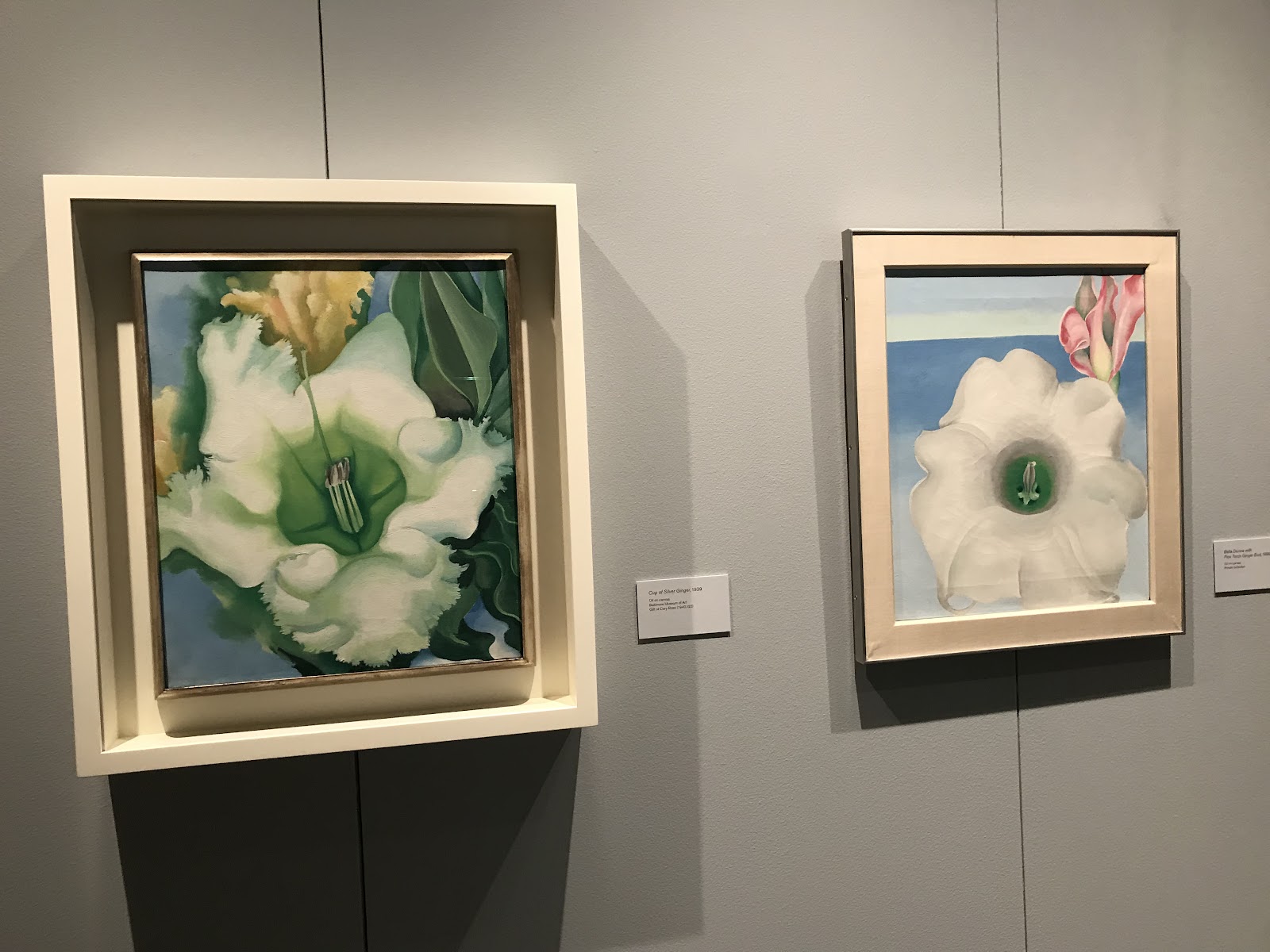
Mark your schedule to visit this show. Many times. You’ll enjoy each and every artul discovery inspired by nature --- and the plants…
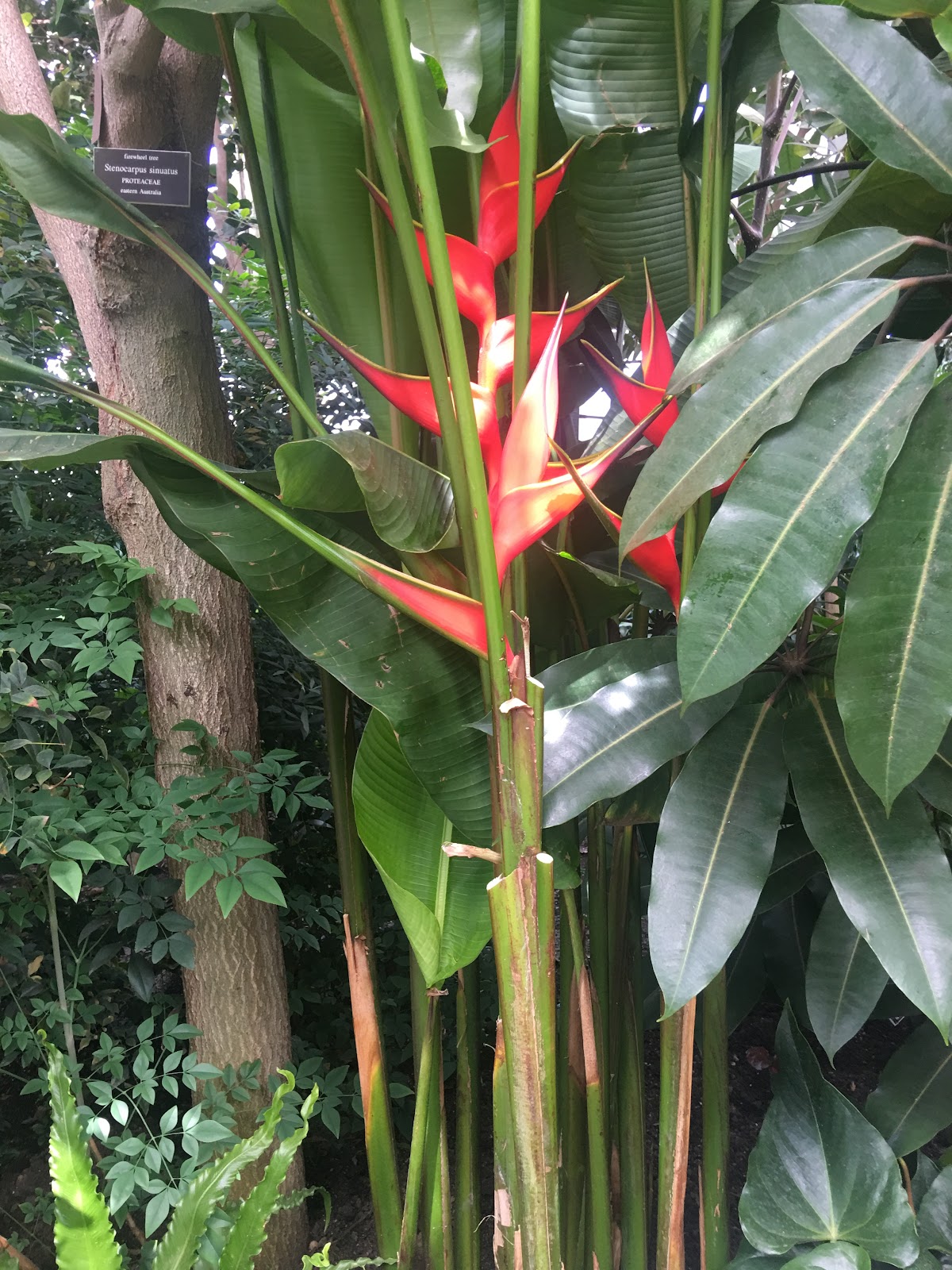

Celebrate Hawai‘i Weekends, Aloha Nights, Live Music and Hula, Lei-Making Demonstrations,
and More During Exhibition at NYBG
Georgia O’Keeffe and Hawai‘i: A Sense of Place
Symposium
Friday, May 18; 10:30 a.m.–12:30 p.m.
Ross Hall
Moderated by curator Theresa Papanikolas, Ph.D., Deputy Director of Art and Programs and
Curator of European and American Art at the Honolulu Museum of Art, this distinguished
panel explores the importance of landscape as Georgia O’Keeffe’s creative refuge, inspiration,
and source of restorative power. The panelists are DeSoto Brown, Historian and Archivist,
Bernice Pauahi Bishop Museum, Honolulu; Samuel M. ‘Ohukaniōhi‘a Gon III, Ph.D., Senior
Scientist and Cultural Advisor, Hawai‘i Nature Conservancy; and Carolyn Kastner, Ph.D.,
Curator, Georgia O’Keeffe Museum, Santa Fe.
Members $25/Non-Members $29
Weekend Performances, Demonstrations, & Film
Saturdays & Sundays, May 19–October 28
Every weekend you’ll be whisked away to the Hawaiian Islands with performances, events,
and activities that celebrate the diverse cultural traditions of Hawai‘i. Enjoy hula, plein air
painting, or see how a traditional lei is made. Explore Hawaiian culture through our Hawai‘i
Past and Present Film Series.
Programs include:
Hula with Music; 12, 1, & 2 p.m.
For full schedule of performance groups, visit nybg.org
Oh - and that denouement? O’Keeffe sent the pineapple company two of her artworks upon returning to New York. The “Dole advertising executives were exasperated to learn that she had painted almost everything except pineapples, including papaya trees, heliconia plants and even fish hooks. So the company had a whole fresh pineapple couriered to her by seaplane, which she graciously did paint.”
Ahhh, the seductions and vagaries of the world according to plants.
Mark your schedule to visit this show. Many times. You’ll enjoy each and every artul discovery inspired by nature --- and the plants…
| NYBG's Todd Forrest, Artist Mark Chai, NYBG's Gregory Long |











